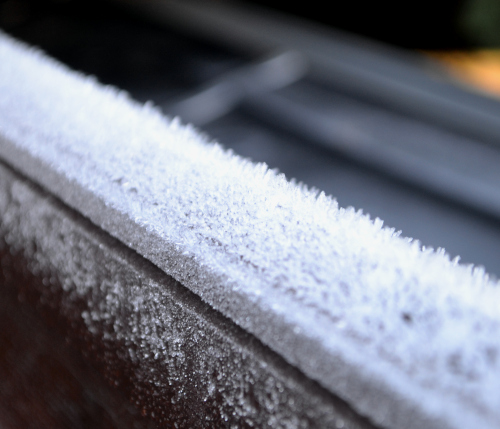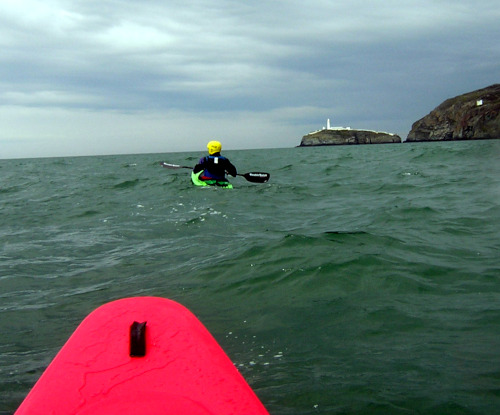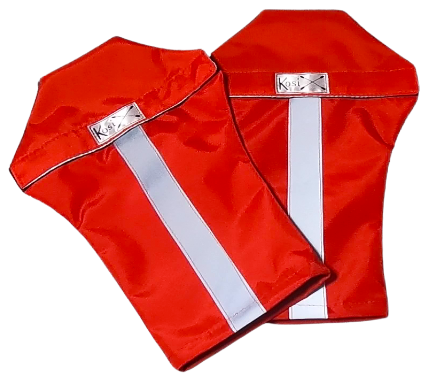Paddling Your Kayak, Canoe or SUP In Winter
Paddling your kayak, canoe or SUP in winter can be very dangerous if not done correctly.
The change in temperature of the water and the air adds a new complication to your safety. Letting your body temperature drop too low can result in shock, hypothermia and even death.
That said, done correctly it can result in some spectacular paddling trips - and you can keep warm.
Here's some of the checks we do before undertaking a winter (cold weather) paddling trip in a kayak, canoe or SUP.
1) What is the weather forecast going to be?
Obvious I know, but you'd be surprised at how many people don't check this for the day they are paddling. It's not good enough to look out the window several days prior and just assume that it will be ok.
There are many online weather sources/apps that give a wide range of forecasts by area and date. The key factors you should review are:
Predicted Weather (rain, sunny, snow etc)
Wind Speed
Wind Direction
Precipitation Percentage (chance of it raining)
Precipitation Amount (amount of rain to fall)
Air Temperature
Water Temperature (if possible)
Wind Chill Factor (this is a result of wind speed and air temperature)
This information should be logged for the day you propose to paddle and taken on the day with the hour by hour changes for the time you are out.
 Frost on a fence - it was -6 deg. C when this was taken (Dec 2022)
Frost on a fence - it was -6 deg. C when this was taken (Dec 2022)2) Do you have the clothing and equipment to cope with the predicted weather?
Think this through carefully. It's not about simply tolerating the weather - it's about being completely comfortable and warm.
Equipment includes your paddle, craft and safety wear (buoyancy aid etc).
Wearing clothing and using equipment that is just adequate will leave you feeling cold (and possibly wet). This could lower your morale, weaken your strength, impact your decision making and make the paddling a lot more difficult.
And it's the old quote:
"Dress for the water not the air temperature"
Using clothing layers will build up heat around your body. For low temperatures, a drysuit is essential. Water conducts heat away from your body 25 times faster than air so you must stay dry if you are to stay completely warm.
Extra clothing and safety equipment (emergency silver blanket, first aid kit etc) should be stowed in your craft in a waterproof bag in case you need it.
3) Does your group have the clothing and equipment to cope with the predicted weather?
It's easy to think of ourselves, but what about your group?
You may not be professionally leading the group, it could just be an ad hoc meeting of friends for a paddle. Regardless, you still have a moral responsibility for the group and their safety.
List out each member of the group and check off that they have the correct level of equipment and clothing to complete the paddle.
If not, decide if you can loan items to them.
Safety Decision Point
At this point, you must make a decision on whether to go ahead with the paddle or not.
If yours or the groups equipment and clothing are not capable of keeping your warm and dry in the predicted weather - then it's a NO.
4) Are you able to physically complete the paddle in the weather conditions?
For all sections of the paddle especially the get in and get out, the weather must not make it impossible to continue.
Snow, for example, can make paths and tracks slippy which makes it difficult to walk and transport your craft and roads treacherous to drive.
Heavy rain could change the level and flow of the river to dangerous levels (see Paddling on Flooded Rivers).
Safety Decision Point
It's a definite NO if the physical environment risks are high from the weather. There is no point trying to overcome these just to paddle. There will be other opportunities in safer conditions.
 Paddling in windy/choppy conditions off Anglesey
Paddling in windy/choppy conditions off Anglesey5) Do you have the capability and experience to cope with the weather?
Different weather conditions create different paddling conditions. You should have the previous experience of these conditions and know that your paddling skills are more than enough to take you through the conditions.
In colder scenarios, for example, your strength will be sapped much quicker so you will need to overcome this with increased fitness.
6) Does the group have the capability and experience to cope with the weather?
Each group member will have a different set of skills and experience. Some you will know really well and others not. You can use a simple checklist to help you:
- Fitness - High, medium, low
- Rescue skills - Advanced, intermediate, beginner
- Paddling skills - Advanced, intermediate, beginner
- Environment (river levels etc) knowledge - High, medium, low
- Location (route, get in, get out, hazards) knowledge - High, medium, low
- Paddling experience - Advanced, intermediate, beginner
When you are grading them, always ensure you ask them and at least one other person to collaborate the grade. This helps to give a more realistic grade.
The more of the group that are graded low or beginner, the more risky the paddle is potentially going to be.
Safety Decision Point
It is often difficult to make a decision based on capability and experience. We do think we are better than we perhaps are and will over grade ourselves because of this.
Having a realistic and honest appraisal is much better and ensures the paddle continues with maximum capability and minimised risks.
7) After going through all of the above, does it still feel 'right'?
You have used a structured process to get to this point. You've injected your own knowledge about the group, the conditions and the likelihood of a successful paddle.
But does it feel 'right'? Your gut feeling ... what does it tell you?


If you are paddling in the winter, then these pogies are brilliant. Water resistant with a heat reflective lining for keeping your fingers super toasty. Dave wears them and recommends them!
Safety Decision Point
The reason that 'gut feel' is used is because often this is the best final appraisal to use and gives you the chance to 'reality check' what has gone before.
There could be something (absolutely anything) nagging you that does not feel right.
So - you have two choices:
1) DO NOT go ahead with the paddle. Almost always the best choice.
2) Review what it is that does not feel right and correct it. You must still go through the review process again until you are 100% happy to go ahead.
Whatever you decide, DO NOT ignore gut feel. It will help you to run minimise risk and undertake successful paddles.
PS. Paddlesports can be dangerous.
Read our safety disclaimer - here

New paddling inspiration, tip, trip or technique video EVERY week! Watch Ed, Dave and Moo on their kayaking, canoe and SUP adventures. It's all about safely having fun on the water. 200,000+ views, 110+ videos & 900+ subscribers so far! Click below to start watching:
Ed & Dave Kayaking Youtube Channel
WANT TO HELP US?
We really value your visit to us today. We run this website and our Youtube channel to provide paddling inspiration, tips, trip and technique content to you. We love being out on the water! If you enjoyed your visit, you can support us by using the links below:
Buy us something on our wish list
Thank you
NEED WEB HOSTING?
We recommend IONOS. Great service, technical support and stable hosting. Click the link below to find out more:
IONOS Web Hosting - RECOMMENDED!


